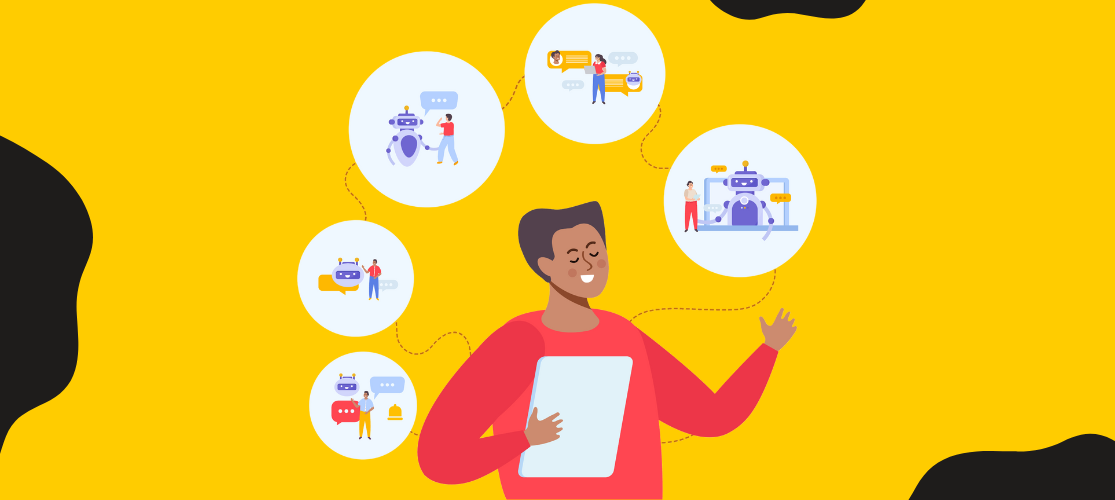The world of social media marketing can be overwhelming to begin with. You may slowly learn the right social media terms, only for them to quickly change or alter in meaning. However, there are some words and phrases that remain consistent in this ever-changing sector, which we will go through with you today.
Know Your Social Media Jargon: A-Z
Algorithm
Your home page shows you what content it thinks you want to engage with, based on what is popular and trending. Over time, as you use a site more, the algorithm will recommend content to you based on what you showed positive engagement with previously.
Analytics
The data that shows when and how people are engaging with your social media content, across the different platforms it is on. You may refer to your analytics when you want to see how your company is being successful on social media, as well as where it may need to improve.
Boost
To boost a social media post means to share it to a larger audience. You would most likely have to pay for this option on the social media sites that the post was originally created and shared on.
Brand Awareness
The level of awareness and familiarity your target audience has with your company or brand. You want to spread brand awareness in order to bring in more clients or customers for your business or company.
CTR (Click-Through Rate)
The percentage of people who actively engage with your post (such as clicking a featured link), as opposed to those who see it while scrolling through their feed.
DM (Direct Message)
A private message sent directly to someone on a social media platform, in the hope that they will respond to it as soon as possible.
Engagement
When someone comments on, shares or clicks on a reaction option (such as “liking”) on a social media post.
Feed
The list of content that becomes available for you to scroll through on the homepage of a website or app.
Follower
Someone who subscribes to a page on a social media content to receive their content in their feed and who may engage with it.
Geotargeting
Targeting content towards a user on a social media site based on their geographical location. For example, a British-based user will receive ads from companies primarily based in the United Kingdom.
Handle
A social media handle is what someone’s account name is on their social media platform. A handle begins with the “@” symbol.
Hashtag
This symbol: #. It is used to connect a post to its relevant topics. When used properly, it may help others find a social media post and increase its engagement.
Header Banner
An image to go behind a profile picture on someone’s profile page. The image should represent the person or company attached to the page in some way, to give the target audience an idea of who they are, what they do or what they offer.
Impressions
The number of times a social media post was shown to somebody in their feed. This could additionally be the number of times it appeared in someone’s search results.
Influencer
Someone with a high amount of followers (at least a thousand) on a social media platform, who may collaborate with companies in order to encourage their audience to buy their products.
Like
Someone engages with a post in a positive, reactionary way without leaving clear feedback as to what they enjoyed about it.
Link
You can click on this to be taken to another website. A link may appear as the website’s URL, but it may also be a hyperlink, meaning that a word or graphic has been connected to a web address, so that when you click on that, you will be taken to the linked website.
Livestream
A live video where people watching can comment and engage with the people in the video in real time. The people in the video cannot see their viewers, but may respond to the comments they leave in their livestream, often verbally.
Networking
Finding, connecting with and engaging with others on social media platforms, particularly those who may be helpful to your business or who you might be able to help with theirs.
Platform
The social media site you choose to share content on. You can consider which platform or platforms are best for your brand or company, and focus on elevating your social media presence on those. For example, some companies may have more success on image-based platforms, while others may thrive on video or writing-focused ones.
Post
Something that is published on a social media page for others to see, such as written content, a photo, graphic or video. A post is often written content accompanied with another one of those options.
Profile Picture
A profile picture is the small avatar or icon that the target audience sees first on their social media profiles. For businesses, this is the logo, but for individuals, this would usually be a high-quality photograph of their face. A profile picture gives new visitors to that profile a first impression.
Reach
A social media statistic that tells you how many people saw your post on a particular platform. You can use this data to try and expand your reach, with the aim to get more people to see your social media posts and visit your page.
Repost
Resharing social media content that you had previously published on that platform. You may do this because the post has become more relevant relating to current world-events, or you may do this in a fun way (such as #ThrowbackThursday) to encourage further engagement.
Schedule
Scheduling content on your social media platforms and website ahead of publication time, giving you time to plan ahead for future social media marketing strategies.
Social Listening
When you take the time to actively see what other people (primarily rival companies) are doing with their social media accounts, such as how often they post and how much engagement they receive from others.
Tagging
Also known as a mention, tagging someone is when you mention them in a social media post or in a comment on a post, with their name linking to their profile for others to see them. This can be effective in businesses, to show when two companies are collaborating with each other.
Targeting
Aiming social media content at specific users. These specific users are likely to be target audience members, or people who previously engaged with similar content, either from the same company or their rivals.
Thread
A string of social media posts connected together for their audience member to see. These social media posts give better context to their reader or viewer when seen as part of their thread, rather than as a standalone piece.
Trend
A current recurring theme in videos, photos or text that people across social media platforms are taking part in.
Trending
A social media post that is popular and receiving attention at one time, which is brought to the attention of others on the platform where it is garnering recognition for further awareness.
Unfollow
When someone who currently follows a social media page for their content decides to stop and unsubscribes from them. After this, that social media page’s content will not be recommended to them and it will no longer appear alongside the other pages they follow.
Viral
When a social media post has been viewed and interacted with widely, primarily within a few days of being posted.
Know Your Platforms
Now that you have a better understanding of the jargon you use, you will also need to know which social media platforms to apply them to and how. These are the mostly popular social media sites at the time of writing:
A personal writing based platform, where you can also upload videos and photos. It has a longer word count than most other social media sites and as one of the oldest platforms on this list, has built a lasting reputation.
An image-based platform, where the user can upload photos that stay on their main profile (grid) or they can upload temporary videos or images that will only last for 24 hours (story).
Another image-based platform, Pinterest allows its users to pin (save) images that they find on this site, often relating to their interests, ambitions or plans. They can also upload their own photographs or graphics here. The images can also be linked to products and their websites, which can be useful for businesses.
A writing-based platform, known for its limited word count. It is a popular platform for discussing current issues and topics in the media.
YouTube
A video-based platform, offering a wide variety of audio-visual content of different durations.
TikTok
A short video-based platform, where most videos are up to a minute long (although you can upload videos up to ten minutes long, at the time of writing).
This is a writing-based platform for professionals looking to share their advice and connect with other professionals or businesses.



